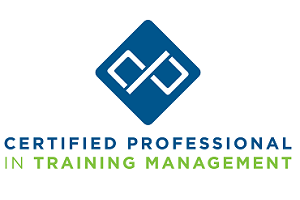Staying Relevant
The role of the trainer is vitally important to the success of individuals and companies. This, therefore, makes the capabilities and knowledge of the trainer essential. In particular, the quality of a trainer rests heavily with their use of technology and concepts. Over the years, most trainers have kept pace with technological developments. What about their proficiency with new concepts?
With regard to technology, trainers are required to remain current with technological progress, whereas the same is not true with regard to concepts. And this presents us with a potential problem — for trainers and those they train: if a trainer is behind the times in their use of technology, trainees will likely be aware; however, if the application of concepts used by a trainer is outdated, trainees will likely be unaware, and lose the potential benefits that more relevant training could have provided. Therefore, trainers must be proactive in developing their knowledge, for the benefit of those they train.
Case in Point: SMART Goals
SMART, (specific, measurable, attainable, realistic and time bound) a concept introduced in 1981, remains the go-to model for goal setting, despite its intended use as a guide for managers in their writing objectives. In 2021, SMART came under new criticism, after results from a goal-setting test were published by Leadership IQ’s Mark Murphy. The test involved 12,801 participants and concluded that greater results were achieved by those who pushed themselves beyond the SMART goal criteria. Murphy notes, “Much of the time, SMART Goal-setting actually acts as an impediment to, not an enabler of, bold action… SMART goals push us to play it safe and stay within our limitations (i.e., be achievable and realistic).”
The findings publicized by Murphy reinforce those of goal-setting theorists Edwin Locke and Gary Latham, psychologists, whose scientific studies involved over 40,000 subjects: In their studies, participants who were given specific but difficult goals (goals that did not necessarily meet the achievable or realistic marks of SMART) achieved significantly greater results compared with those who adhered to the SMART standard.
Beyond SMART: IDEAL
While SMART goals were, according to Mark Murphy, “Originally designed for the slow-moving command-and-control era,” IDEAL — both a model and a process — offers a modern-day approach for the success of both personal and business goals.
IDEAL is an active, five-step model. The steps are: Intend; Direct; Engage; Assess; Learn. The fifth step of IDEAL — Learn — makes IDEAL cyclical, which drives ongoing improvement through the use of the model. That is, through the Learn aspect of IDEAL, the other aspects may be reexamined and revised, and the approach to success optimized. Each iteration of IDEAL, therefore, builds on a potential for continued successes and facilitates the user’s ability to be more productive, and increases the chances for success of an aim.
Each of IDEAL’s five steps contributes to the creation of the process and asks a key question:
- Intend
Question: Is the goal actionable? An actionable goal is “sufficiently specific” so as to allow planning.
- Direct
Question: How is success possible via a process? A potential for success must be understood in terms of steps and objectives.
- Engage
Question: How is “productivity” defined? In the IDEAL model, “productivity” refers to a performance standard.
- Assess
Question: What data is needed in order to validate your progress? Data is used to identify what is, and is not, working in efforts made to achieve progress.
- Learn
Question: Where are improvements needed? It’s not enough to have data. Decisions must be made about how to apply new knowledge for the improvement of a plan.
As we evolve — be it through our ideas, technology, or anything else — former standards give way to the more useful and beneficial. While SMART was useful in its time, we need to account for additional and different requirements for success, as we understand the concept today.
Let’s quickly review each aspect of SMART in the context of the IDEAL perspective:
A SMART goal was specific. Yes, your goal must be specific. However, a specific goal is not sufficient when planning your success. A specific goal is not enough: It needs also to be actionable. Actionable goals have answered how — through what steps — success is possible.
A SMART goal was measurable. Being measurable is not relevant to all goals, such as a goal to “start a business,” for example. Instead, if measurability is not applicable to your goal, consider your progress in terms of what may be verified. Verifiable progress toward a goal might involve a checklist. If you had a goal to start a business, for example, you might list everything required in order for you to launch your business. Each item on your checklist might represent a verifiable accomplishment that contributes to the success of the goal, and might include: Obtain a business license; open a business account; register a domain name and create a website; etc. Each step moves you toward your end goal and is verifiable.
A SMART goal was achievable. How do you know if your goal is achievable? Imagine trying to achieve something not previously attempted. It is more useful to have an explanation for the means by which you will attempt your goal; that is, it’s more useful to define your process. By defining your process, you’ll have the benefit of a predetermined, step-by-step path to success.
A SMART goal was relevant. If we set a goal, don’t we believe it has relevance? Instead of relevance, the focus should be on motivation. If your motivation to pursue a goal is unclear to you or somehow problematic, you could face challenges to persist and succeed. It’s also important to think beyond the apparent reason for your goal. In addition to knowing the “why” for your goal, also identify your “why not,” which is the set of potential reasons for how you could fail to achieve your goal. If you don’t know how you might fail, then you cannot be fully prepared to succeed.
Finally, a SMART goal was time bound. But not all goals are or need to be deadline driven. Imagine a company that has a goal to increase sales by 25% within one year. How useful is that timeframe to the work that needs to be done this month, or this week, or today? Instead of setting some distant endpoint, think of time in terms that are useful, as building blocks, or increments of opportunity to advance, and focus on what progress means and requires, now — today. Consider the difference between a far-off goal (such as to increase sales by 25% over the course of a year) and the work required to accomplish that goal. Instead of a remote goal, think of your plan to increase sales in terms of what needs to be achieved this month, or by the results that you need this week from your various sales activities.
It’s time for an upgrade in our knowledge about goal-planning. There is a new and more useful way to think about, and prepare for, success. Next time you’re tasked with planning the success of a personal or business goal, take a step beyond SMART: think IDEAL. In doing so, you’ll have a superior, more relevant framework for planning from which you can expect greater results from both the training function and the business.





